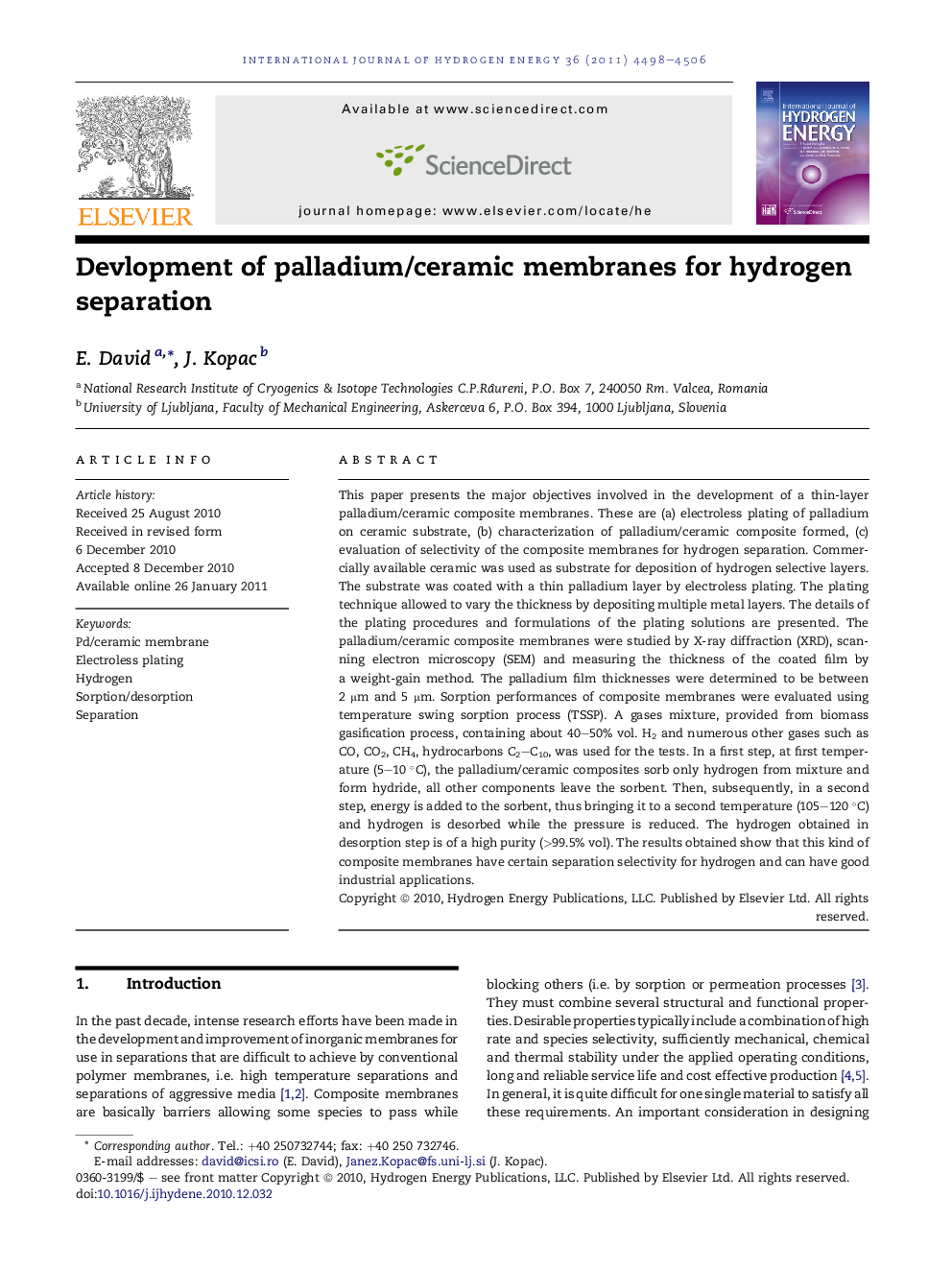| Article ID | Journal | Published Year | Pages | File Type |
|---|---|---|---|---|
| 1276239 | International Journal of Hydrogen Energy | 2011 | 9 Pages |
This paper presents the major objectives involved in the development of a thin-layer palladium/ceramic composite membranes. These are (a) electroless plating of palladium on ceramic substrate, (b) characterization of palladium/ceramic composite formed, (c) evaluation of selectivity of the composite membranes for hydrogen separation. Commercially available ceramic was used as substrate for deposition of hydrogen selective layers. The substrate was coated with a thin palladium layer by electroless plating. The plating technique allowed to vary the thickness by depositing multiple metal layers. The details of the plating procedures and formulations of the plating solutions are presented. The palladium/ceramic composite membranes were studied by X-ray diffraction (XRD), scanning electron microscopy (SEM) and measuring the thickness of the coated film by a weight-gain method. The palladium film thicknesses were determined to be between 2 μm and 5 μm. Sorption performances of composite membranes were evaluated using temperature swing sorption process (TSSP). A gases mixture, provided from biomass gasification process, containing about 40–50% vol. H2 and numerous other gases such as CO, CO2, CH4, hydrocarbons C2–C10, was used for the tests. In a first step, at first temperature (5–10 °C), the palladium/ceramic composites sorb only hydrogen from mixture and form hydride, all other components leave the sorbent. Then, subsequently, in a second step, energy is added to the sorbent, thus bringing it to a second temperature (105–120 °C) and hydrogen is desorbed while the pressure is reduced. The hydrogen obtained in desorption step is of a high purity (>99.5% vol). The results obtained show that this kind of composite membranes have certain separation selectivity for hydrogen and can have good industrial applications.
► The research highlights a future field based on hydrogen clean energy. ► Selective sorbents are used for hydrogen recovery from renewable energy sources. ► A gas mixture containing hydrogen is provided from biomass gasification process. ► The hydrogen recovered from this mixture is of high purity.
